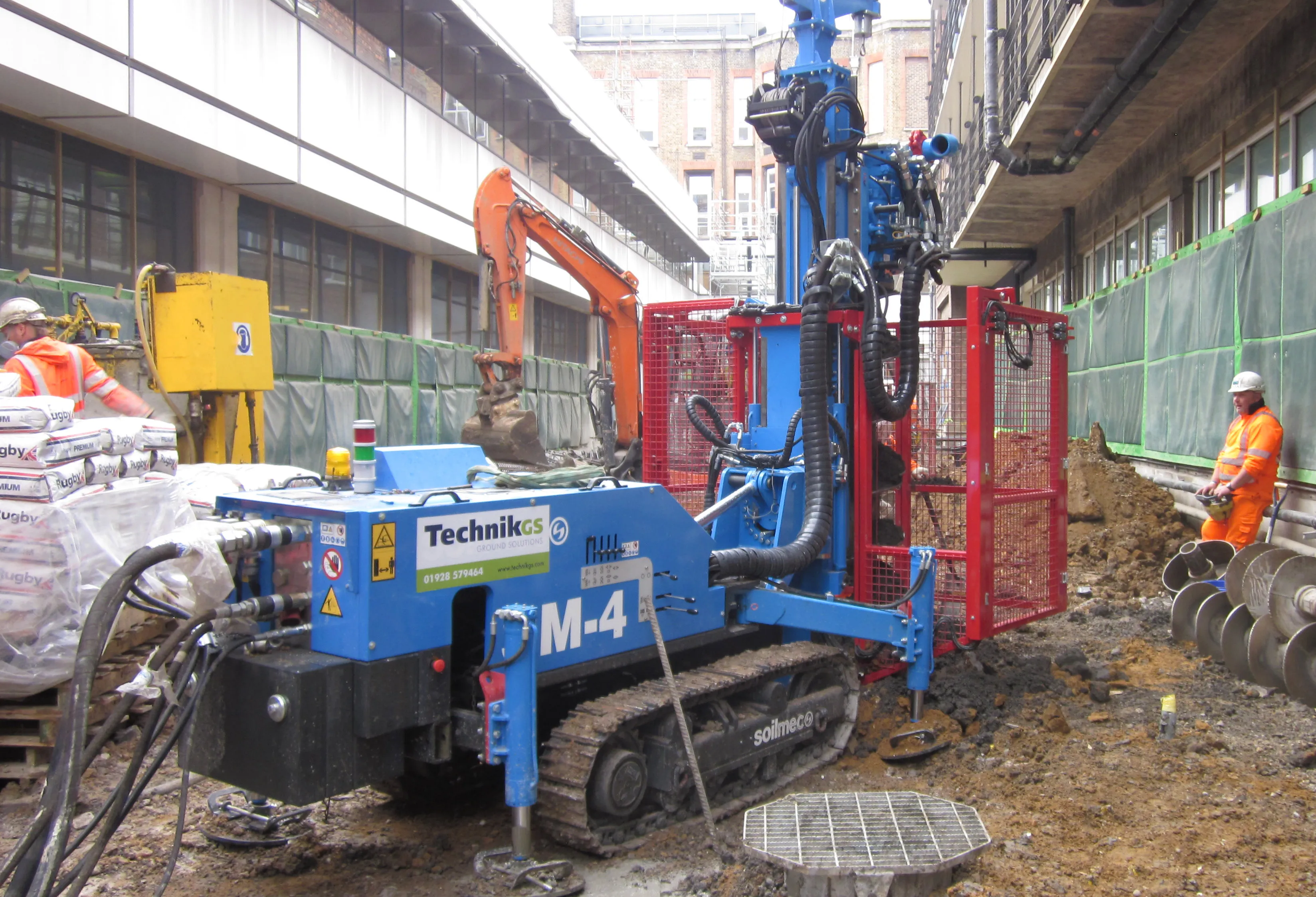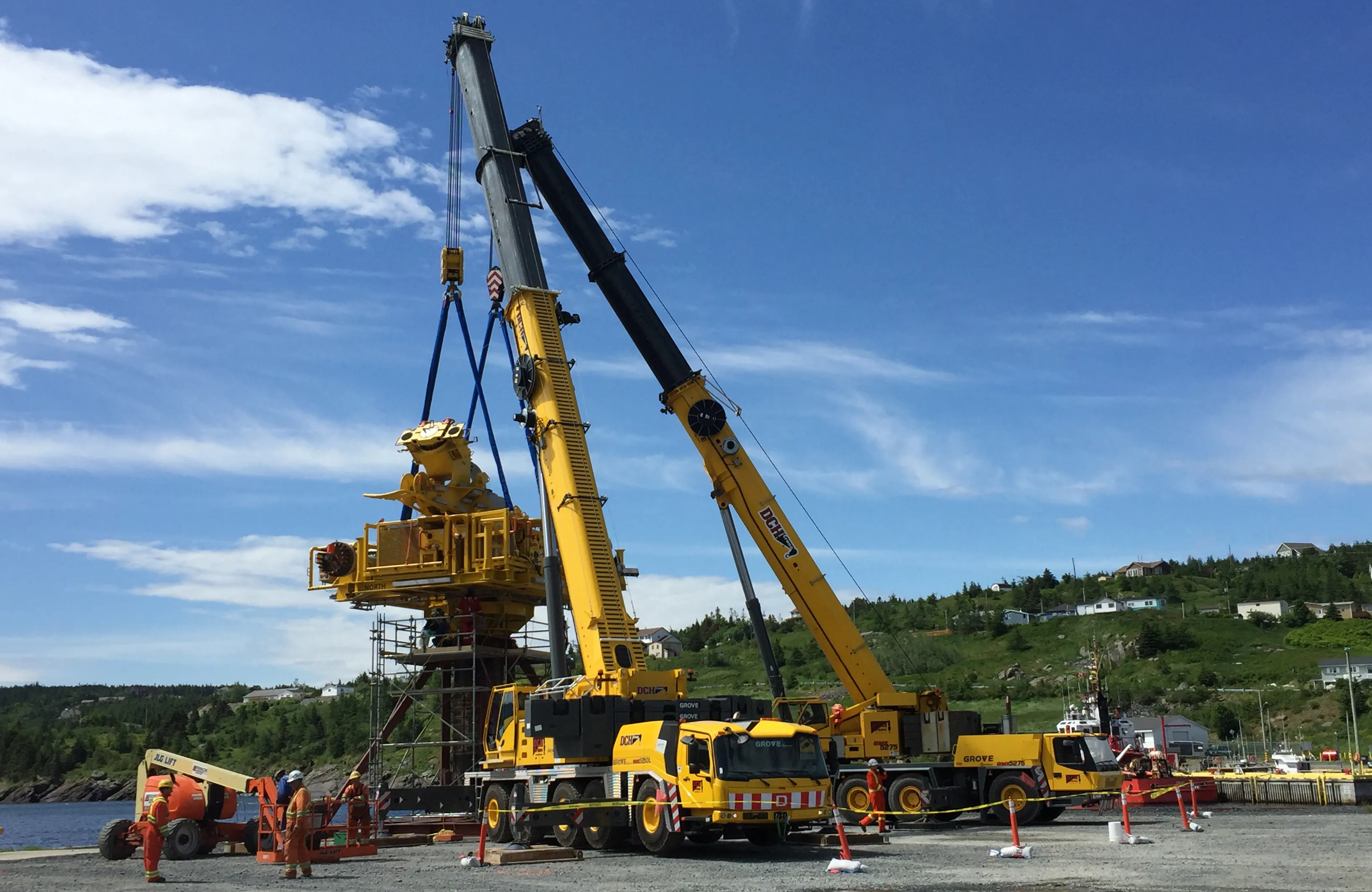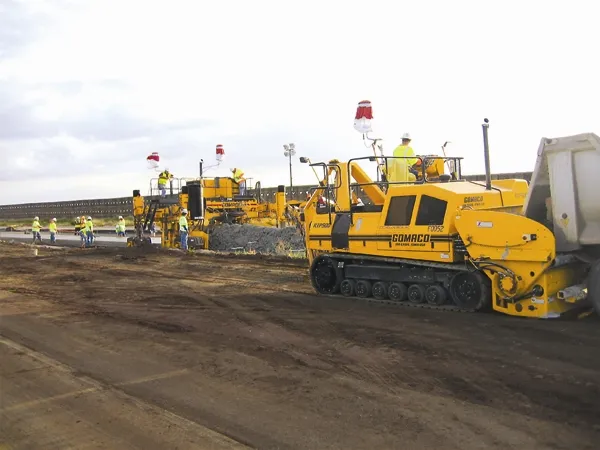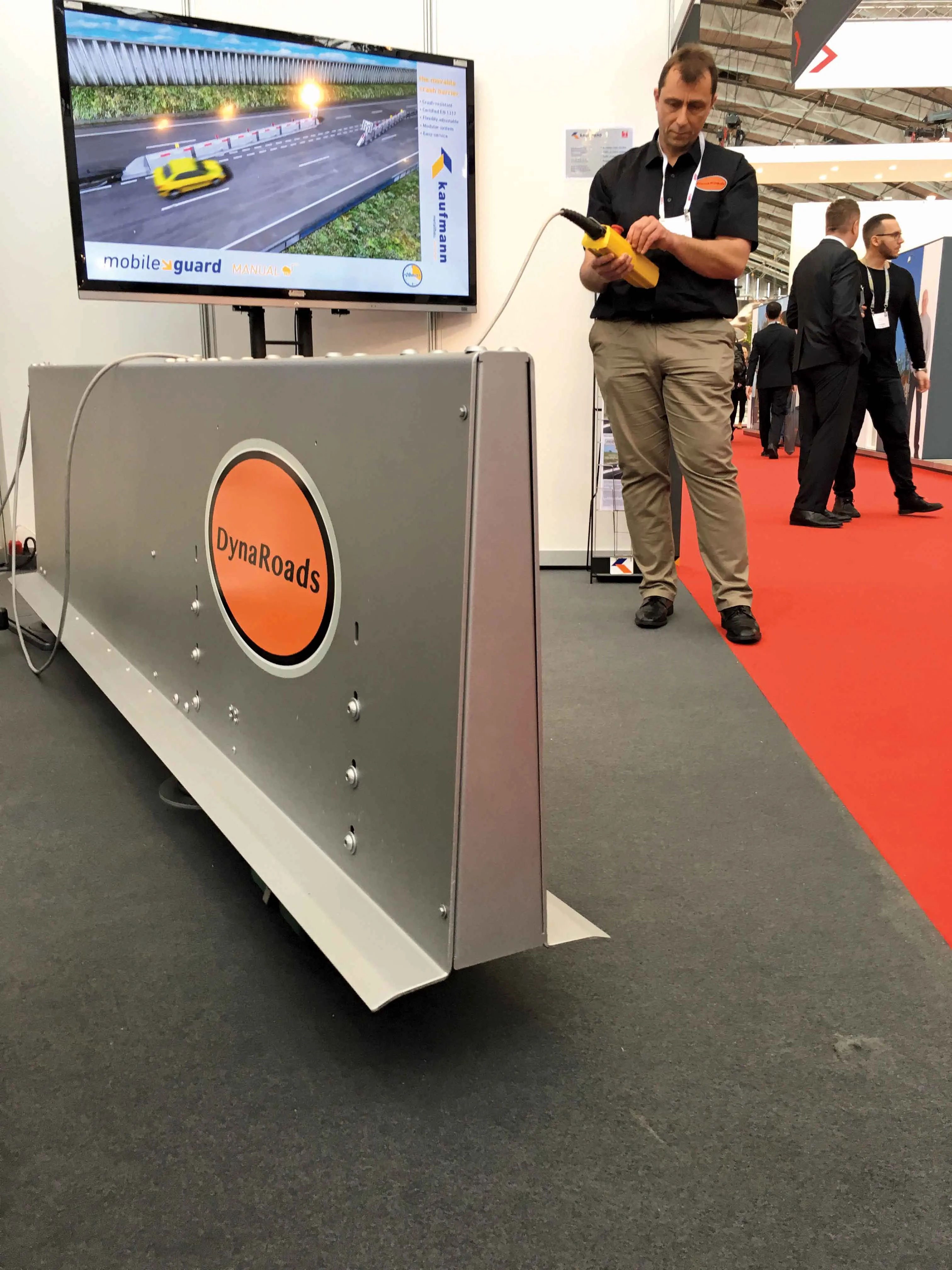Italian drilling, piling and foundation equipment specialist Soilmec is introducing its compact SM-4 rig designed to create sectional flight auger (SFA) piles, a technique that uses sectional lengths of a hollow stem continuous flight auger. Soilmec says that the new machine is ideal for “job sites with low head room or very restricted (access),” and in situations that “a CFA rig cannot reach.”
Once the SM-4 is on site, “each section, commencing with a toothed lead auger, is added to the rig as the auger
February 2, 2015
Read time: 3 mins

Italian drilling, piling and foundation equipment specialist 2959 Soilmec is introducing its compact SM-4 rig designed to create sectional flight auger (SFA) piles, a technique that uses sectional lengths of a hollow stem continuous flight auger. Soilmec says that the new machine is ideal for “job sites with low head room or very restricted (access),” and in situations that “a CFA rig cannot reach.”
Once the SM-4 is on site, “each section, commencing with a toothed lead auger, is added to the rig as the augers are bored into the ground,” says Soilmec. “When the required depth is reached, grout is mixed and pumped through the rotary and down the hollow stem of the augers as they are extracted and removed. Piles can therefore be made in wet unstable ground conditions. Sectional flight augers are also used, in certain soil conditions, for open bore piles. The auger sections are extracted fully before the grout is cast in the open bore.”
In terms of its spec, the compact SM-4 rig unit uses retractable crawlers and stabilisers, allowing the rig to achieve a minimum width of 740mm and a minimum tracking height of 1,980mm. The casing clamp system is also 740mm wide and a separate power pack mounted on the crawlers has been introduced to allow independent tracking around the site. It can move a reasonable distance too … the unit has 20m to 50m of hydraulic hoses between the power pack and the rig. This would enables the rig to work, for example, inside a tunnel or under a low bridge while the power pack remains outside. The rig has a 115kW Tier 4i diesel engine, a fixed boom, a sliding mast and a side mast movement of +/- 45 degrees. The telescopic mast has a feed stroke range of 1.5-2.5m, giving low head room operating capability. The cylinder crowd system gives 70kN of maximum hoist force and the rotary head has 3347daNm of maximum torque with a 102mm swivel. The swan neck and hollow shaft design allow for concrete injection.
Other things to look out for on the SM-4 are a remote control operating system for drilling, positioning and tracking and a safety-conscious double-hinged safety guard and slow rotation system that complies with the new Euro Legislation EN16228 standard. “This enables easy removal of the front panels when working close to a wall, using the already interlocked side panels for access to the auger string for loading and unloading sections,” says Soilmec.
Once the SM-4 is on site, “each section, commencing with a toothed lead auger, is added to the rig as the augers are bored into the ground,” says Soilmec. “When the required depth is reached, grout is mixed and pumped through the rotary and down the hollow stem of the augers as they are extracted and removed. Piles can therefore be made in wet unstable ground conditions. Sectional flight augers are also used, in certain soil conditions, for open bore piles. The auger sections are extracted fully before the grout is cast in the open bore.”
In terms of its spec, the compact SM-4 rig unit uses retractable crawlers and stabilisers, allowing the rig to achieve a minimum width of 740mm and a minimum tracking height of 1,980mm. The casing clamp system is also 740mm wide and a separate power pack mounted on the crawlers has been introduced to allow independent tracking around the site. It can move a reasonable distance too … the unit has 20m to 50m of hydraulic hoses between the power pack and the rig. This would enables the rig to work, for example, inside a tunnel or under a low bridge while the power pack remains outside. The rig has a 115kW Tier 4i diesel engine, a fixed boom, a sliding mast and a side mast movement of +/- 45 degrees. The telescopic mast has a feed stroke range of 1.5-2.5m, giving low head room operating capability. The cylinder crowd system gives 70kN of maximum hoist force and the rotary head has 3347daNm of maximum torque with a 102mm swivel. The swan neck and hollow shaft design allow for concrete injection.
Other things to look out for on the SM-4 are a remote control operating system for drilling, positioning and tracking and a safety-conscious double-hinged safety guard and slow rotation system that complies with the new Euro Legislation EN16228 standard. “This enables easy removal of the front panels when working close to a wall, using the already interlocked side panels for access to the auger string for loading and unloading sections,” says Soilmec.









